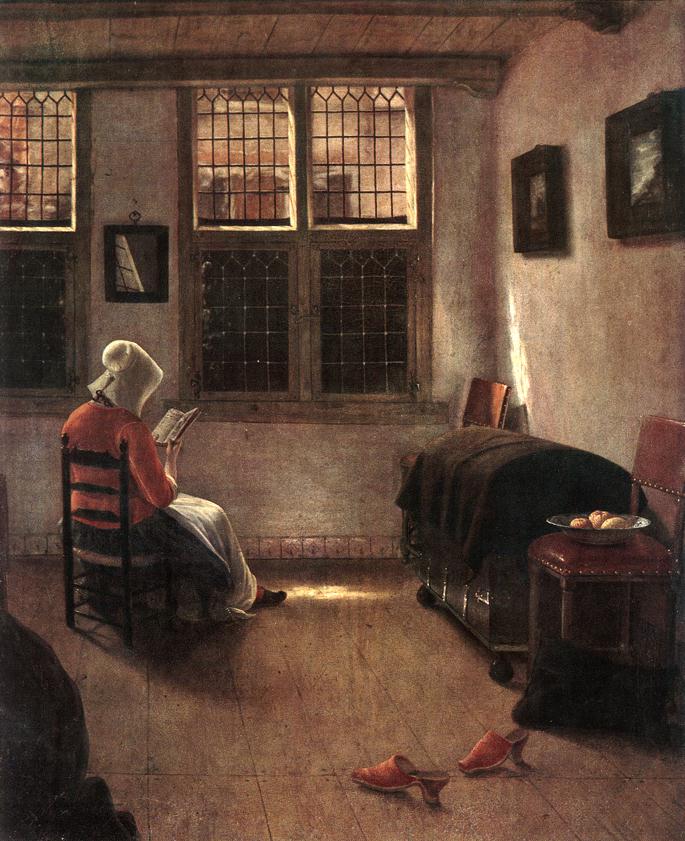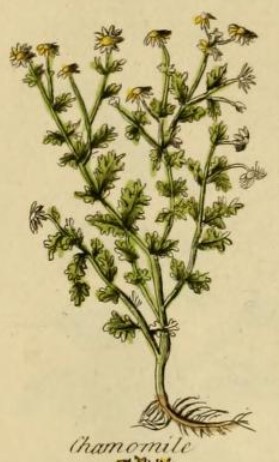'But I gave her all medicines': herbal remedies in Alice Thornton's Books
On Saturday 18th November the Thornton's Books team are hosting 'Alice Thornton's Cafe' at Starbank Park, Edinburgh as part of the Being Human festival 2023. As a taster, project postdoc Jo Edge outlines some of the herbal remedies used by Alice Thornton and recorded in her books.
CN: discusses child illness and death.
Women and domestic medicine
I give unto my dear daughter Comber all my physic books and recipes, together with my stock of salves and ointments, desiring her to give unto her sister Katherine Danby what she may have occasion to use for herself or her children.[1]
This extract from Alice Thornton's will, made in 1705 before her death in 1707, tells us that Thornton owned multiple medical books, recipes and remedies, which she passed down to her eldest daughter, Alice (Nally) Comber, for the use of herself, her sister Katherine Danby, and Danby's children. That Thornton was a medical practitioner is not out of the ordinary. Educated, literate women in the seventeenth century, who were in charge of the domestic sphere, had a good deal of basic medical knowledge, and access to remedies. That Thornton left these resources, presumably accumulated over many years, to her female descendants illustrates the gendered nature of medical roles. Aside from midwives, licensed professional medical practitioners - surgeons, apothecaries, and physicians - were male. But domestic medicine - the home treatment of wounds and cuts, aches and pains, and the day-to-day management of chronic conditions - was almost exclusively the domain of women.

During the course of her four books, Thornton regularly refers to the medical issues suffered by herself, her family and her friends. The Thorntons were members of the landed gentry and could and did pay for the services of medical professionals when needed. Thornton's brother-in-law, Timothy Portington, was an apothecary in Malton, and they also used the services of the York physician Robert Wittie. But by far the most prominent medical practitioner in Thornton's books is Thornton herself, and her descriptions of administering medicine show that she was highly read, with access to knowledge and remedies - including herbs and plants - as confirmed by her will.
The medicinal properties of certain herbs and plants has a history as long as time. The earliest attestations are from Sumeria, from around 3000BC, written on clay tablets. By the seventeenth century, herbals - books describing different herbs and plants, their properties and uses - were still going strong. And the seventeenth century had something the Sumerians and medieval Europeans didn't have to circulate this information – the printing press. And this was a time of rapidly expanding literacy. Thornton was a highly educated woman of aristocratic birth, firmly in the ranks of the landed gentry once she married. Thornton discusses a range of herbal and plant-based remedies in her books. Here, I want to demonstrate Thornton's knowledge of herbs and what they did by comparing her accounts of use to the information in her near-contemporary commentator, Nicholas Culpeper's (1616-54) English Physitian of 1652. Culpeper is probably the best-known commentator on herbal remedies from Thornton's time, and a comparison of Thornton and Culpeper's writing on the same plants and their uses is instructive.
Chamomile for stitches
In 1659, Thornton's mother, Alice Wandesford, lay on her deathbed at her home, Hipswell Hall, where Thornton and her family were also living. Falling sick on 17 November, Alice Wandesford eventually died on 10 December, and Thornton recounts her drawn-out death in great detail in Book 1. Thornton also relates the story of her mother's death bed in her Book of Remembrances. In Book 1, as well as in the Book of Remembrances, Thornton relates the method with which her mother's pain was alleviated:

It pleased God to visit my dear and honoured mother, the Lady Wandesford, with her last sickness upon Friday the 17th of November 1659, beginning then with an exceeding great cough which tormented her body with stitches in her breast, and troubled her with short breathing. These stitches continued about 14 days together hindering her from almost any sleep or rest insomuch that it was wonderful how she could subsist. But, upon the use of bags with fried oats, butter and chamomile chopped laid to her sides the stitches removed and the cough abated as to the extremity thereof.[2]
What did Thornton's near-contemporary, Nicholas Culpeper, have to say about chamomile?
This is so well known everywhere that it is but lost time and labour to describe it. The virtues whereof are as follows: a decoction made of chamomile and drunk takes away all pains and stitches in the sides...the bathing with a decoction of chamomile takes away weariness, eases pains to whatever part of the body they are applied.[3]
Peony for fits
In May 1660, when the family were living in Richmond with Thornton's aunt and uncle, Anne and Maulger Norton, some maids persuaded William Thornton to allow their 6-year old daughter, Nally, to go to a pageant to celebrate the restoration of Charles II. However, the noise from muskets caused Nally to become very frightened and she fell into a bout of fits. Thornton herself administered medicine to Nally at home, and luckily she eventually recovered:

And being almost out of her poor wits did shriek and cry so extremely, she could not be pacified for all they could do. But in extremity fell into most dreadfull fits of convulsions there while she was at Richmond in Mr Smithson's shop. Having had three or four of them so sadly and so dreadfully that they had much to do to save her alive or bring her to herself again, but started extremely much and then falling down again. At last, they doing all could do to her, did bring my dear child half dead to me, which was a sad and dismal affliction to my weak heart, and she continued very ill all that night. But I gave her all medicines for it and oil of amber and peony and other things, which by the Lord's great and infinite mercy to me did at length preserve and restore her from them.[4]
This is what Culpeper had to say about peony, a flowering plant:
The root of the male peony, freshly gathered, has been found by experience to cure the falling-sickness, but the surest way is (besides hanging it about the neck, by which children have been cured) to take the root of the male peony washed clean and stamped somewhat small, and lay it to infuse in sack for twenty four hours, at the least, after strain it, and take first and last, morning and evening a good draught for sundry days.[5]
Saffron for small pox

About a month before Nally's ill-fated expedition to the pageant at Richmond, Thornton had given birth to her sixth child, William. But less than two weeks after he was born, William became very ill, and would sadly die on 28th April. Here, she describes administering home remedies to her baby, who was suffering with something akin to small pox:
For, on the Friday sennight after, he began to be very angry and froward after his dressing in the morning, so that I perceived him not to be well. Upon which, I gave him Gascoigne's powder and, having had three hours sleep, his face when he awaked was full of red, round spots like the smallpox (being of the compass of an halfpenny and all wealed white over).[6]
Gascoigne's powder was, at this time, a fairly new and fashionable compound of various ingredients, which had variable formulae, but often included saffron, obtained from crocuses, which grew abundantly in England. Of saffron, Culpeper said:
It is an excellent thing in epidemical diseases, as pestilences, small pox, and measles. It is a notable expulsive medicine, and a notable remedy for the yellow jaundice.[7]
Alice Thornton, then, was a woman with access to medical knowledge about herbs. She read, passed on and collected recipes and knowledge, and administered care to her family when they were ill. She knew what herbal and plant remedies to use for particular ailments - and her knowledge of the properties of herbs and plants aligned with that of contemporary authorities on such matters.
Modernised from 'The Will of Alice Thornton, 10 April 1705', in Charles Jackson, The Autobiography of Mrs Alice Thornton of East Newton, co. York (Durham: Surtees Society, 1875), 337. ↩︎
The text quoted above is from our work-in-progress edition of Alice Thornton's Books. The text is modernised in the body of the blog and the semi-diplomatic transcription is reproduced here in the notes. 'It pleased God to vissitt my Deare & hon.red mother The Lady Wandesford, with her last Sickenesse. uppon friday the 17th of november 1659 beginning then with an exceeding great Cough; which tormented her Bodie with stitches, in her breast, & troubled her with short breathing; These stitches contineued about 14. daies together hindering her from almost any sleepe or rest, in so much that it was wonderfull how she could subsist. But uppon the use of bagges with fried oats, butter & camomiell chopt layed to her sides, the stitches removed, & the cough abated, as to the extreamity thereof'. Alice Thornton, Book 1: The First Book of My Life, British Library MS Add 88897/1, 165-6 (hereafter Book 1). ↩︎
Modernised from Nicholas Culpeper, The English Physitian .... (London: Peter Cole, 1652), 27. ↩︎
'And beeing allmost out of her poore witt did scrike & cry soe extreamly she could not be Pacified for all they could doe. But in extremy fell into most dreadfull fitts of Convoltions there while she was att Richmond in Mr smithsons shop Haveing had 3 or 4 of them soe sadly and soe dreadfully that they had much to do to save her a live or bring her to her selfe againe but started extreamly much & then falling downe againe Att last they doing all could do to her did bring my deare Childe halfe dead to me which was a sad & dismall affliction to my weake heart and she continued very ill all that night But I gave her all meadicins for it & oyle of ambr & Pieony & other things which by the Lords great & infinitt mercy to me, did at length preserve & restore her from them'. Alice Thornton, Book 2: The First Book of My Widowed Condition, Durham Cathedral Library, GB-0033-CCOM 7, 186. ↩︎
Modernised from Culpeper, English Physitian, 192-3. ↩︎
'for on the friday senitt affter: he began to be very Angery & froward. Affter his dressing in the morning: soe that I perceaved him not to be well; uppon which I gave him Gascoyne Pouder And haveing had 3 houers sleepe his face when he awaked was full of Red round spotts like the Smale Pox beeing of the compasse of an halpeny; & all whealed white over', Book 1, 178-9. ↩︎
Modernised from Culpeper, English Physitian, 212. ↩︎
Citing this web page:
Joanne Edge. ''But I gave her all medicines': herbal remedies in Alice Thornton's Books'. Alice Thornton's Books. Accessed .https://thornton.kdl.kcl.ac.uk/posts/blog/2023-11-16-alice-thornton-herbal-medicine/